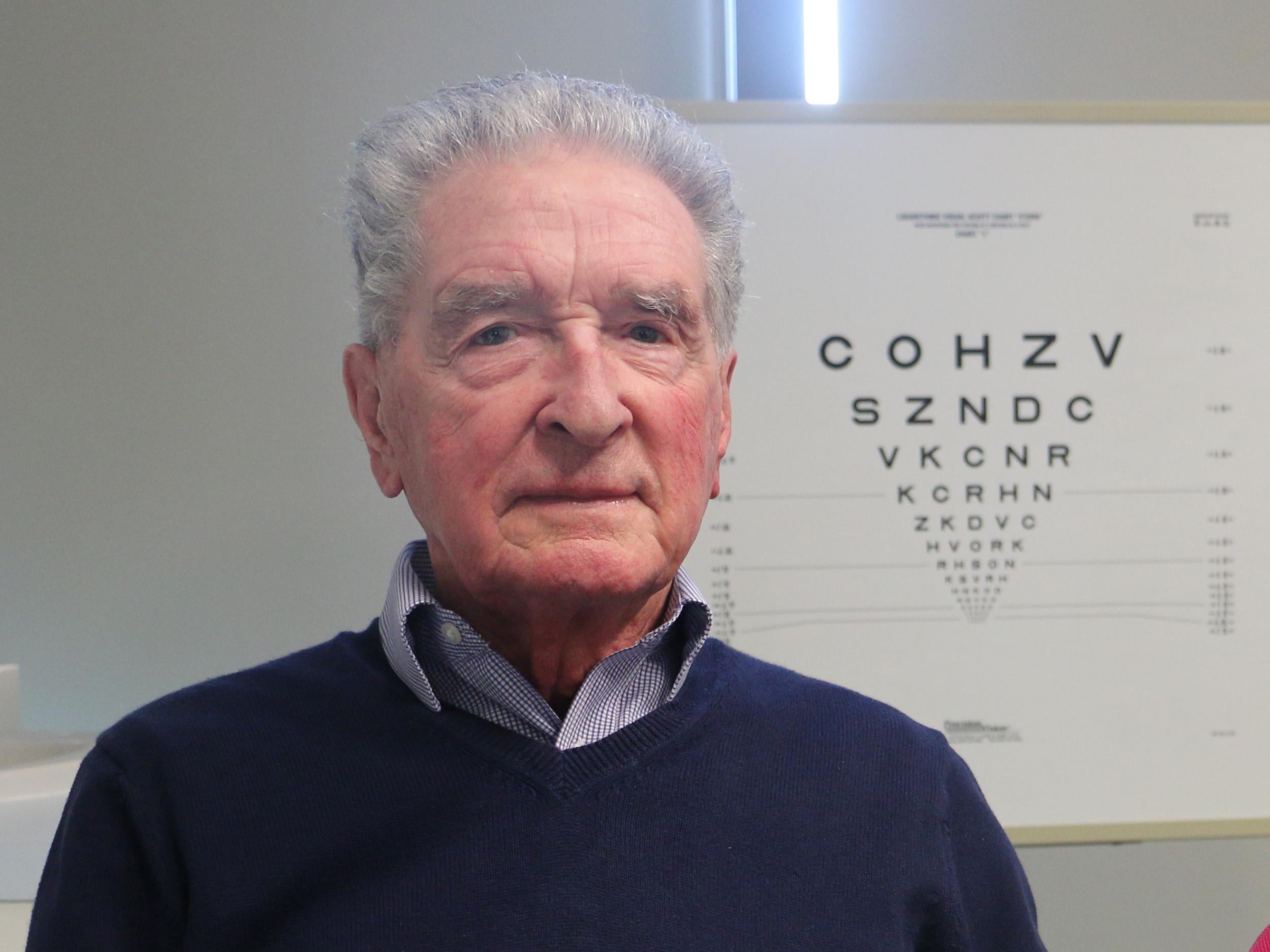The Independent's journalism is supported by our readers. When you purchase through links on our site, we may earn commission.
Blind people could have sight restored after stem cell trial success
Advance could mean 'affordable off-the-shelf therapy' to treat age-related macular degeneration, the leading causes of sight loss in the UK

Patients have had their sight restored in a pioneering trial in which stem cells were used to regrow the cells in the eye responsible for detailed vision.
Two patients, a man in his eighties and a woman in her sixties, are now able to read again after the procedure, which is the first of its kind.
Both patients suffered from a severe visual impairment caused by age-related macular degeneration (AMD), but reported their sight was greatly improved 12 months on.
While the results have been seen in a small number of patients, the early findings are a promising sign the treatment is safe and could be effective in other blindness causing diseases, the researchers said.
“This study represents real progress in regenerative medicine and opens the door on new treatment options for people with age-related macular degeneration,” Professor Pete Coffey of UCL said.
“We hope this will lead to an affordable ‘off-the-shelf’ therapy that could be made available to NHS patients within the next five years.”
AMD is the most common cause of blindness in developed countries according to the Foundation Fighting Blindness – in the UK it affects around 600,000 people.
It causes the central vision to deteriorate, making it impossible to focus on text or objects, causing colours to lose vibrancy and making it difficult to recognise faces.
While the peripheral vision isn't affected, meaning patients don't have total sight loss, it can make it very difficult to live independently and can lead to a legal classification of blindness.
“In the months before the operation my sight was really poor and I couldn’t see anything out of my right eye. I was struggling to see things clearly, even when up-close," said Douglas Waters, 86, from Croydon, one of the patients treated at Moorfields Eye Hospital.
"After the surgery my eyesight improved to the point where I can now read the newspaper and help my wife out with the gardening. It’s brilliant what the team have done and I feel so lucky to have been given my sight back.”
The loss of vision is caused by the death of a thin layer of light-sensing retinal cells at the back of the eye, in a region called the macular.
All the subjects in this trial had a severe form of the condition, called “wet” AMD, where sight loss can happen rapidly in just days or weeks, Mr Waters was diagnosed in July 2015 and began treatment just three months later.
For this trial new macular cells were grown from embryonic stem cells – which can grow to become any type of tissue in the body – and were attached to a plastic scaffold “patch” which recreates the shape and structures of the eye.
The patch was then inserted into the eye, replacing the diseased macular cells.
Patients had previously been unable to read, even with glasses, but can now read 60-80 words per minute with normal reading glasses.
The findings, published in the journal Nature Biotechnology, are the result of a partnership between Moorfields Eye Hospital NHS Foundation Trust, the UCL Institute of Ophthalmology, and the National Institute for Health Research (NIHR).
It could work in other types of sight loss, the authors said, and independent experts agreed there could be benefits in the near future.
Dr Carmel Toomes, associate professor at the Leeds Institutes of Molecular Medicine said that previous studies have “injected cells directly into the patient”, but the new patch technique helps cells “grow in the correct orientation".
“What’s exciting about this study is that the patients recorded an increase in vision. Patients with very poor vision are chosen for phase 1 trials because of their “untested” nature.
“To see an improvement is a good sign that that this therapy may help patients in the future, although further studies are needed before real conclusions can be drawn.”
Join our commenting forum
Join thought-provoking conversations, follow other Independent readers and see their replies
Comments
Bookmark popover
Removed from bookmarks